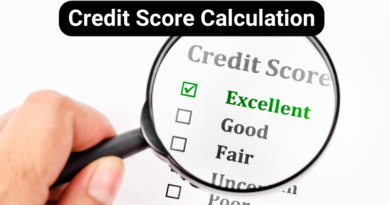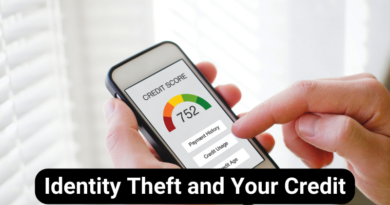When to Consider a Personal Loan and When to Avoid It
1. Introduction
A personal loan can be a powerful financial tool, but it’s not always the best solution. These loans are versatile and can be used for various purposes, such as consolidating debt, funding a large purchase, or covering unexpected expenses. However, personal loans can also lead to financial pitfalls if taken without careful consideration. This post will explore when a personal loan makes sense and when it’s better to avoid it, helping you make informed financial decisions.

2. What is a Personal Loan?
A personal loan is a type of loan that allows you to borrow a lump sum of money and repay it in fixed monthly installments over a set period, typically ranging from 1 to 7 years. They are often unsecured, meaning they don’t require collateral, but secured personal loans backed by assets like a car or savings also exist.
Key Features:
- Fixed Interest Rates: Your payments remain consistent throughout the term.
- Repayment Terms: Terms vary, but shorter terms generally result in less interest paid overall.
- Versatility: Personal loans can be used for various purposes, making them appealing for those with multiple financial needs.
3. When to Consider a Personal Loan
1. Debt Consolidation
If you have multiple debts with high interest rates, a personal loan can consolidate them into one manageable payment. This strategy simplifies repayment and can reduce overall interest costs if the new loan’s interest rate is lower.
2. Financing a Major Purchase
When you need to make a large purchase—such as home repairs or medical treatments—a personal loan can be a better alternative to high-interest credit cards. It’s particularly useful when the expense adds value over time, like increasing your property’s worth.
3. Emergency Situations
Unexpected expenses like medical bills or urgent car repairs can disrupt your finances. A personal loan may provide quick access to funds with a lower interest rate compared to payday loans or credit cards.
4. Building or Repairing Credit
If you’re looking to improve your credit score, taking out a small personal loan and repaying it on time can demonstrate financial responsibility and boost your credit.
5. High-Interest Debt Replacement
Replacing high-interest debt, such as credit card balances, with a personal loan offering a lower interest rate can save money and make repayments more manageable.
4. When to Avoid a Personal Loan
1. Unnecessary Purchases
Using a personal loan for non-essential items like luxury goods, vacations, or parties is rarely a good idea. These purchases don’t provide long-term value and can lead to unnecessary financial strain.
2. When You Can’t Afford the Payments
If your budget doesn’t allow for monthly loan repayments, taking on a personal loan can worsen your financial situation. Missed payments will damage your credit score and may result in penalties.
3. Poor Credit Leading to High Interest Rates
Borrowers with poor credit may qualify for personal loans with excessively high interest rates, which can make the loan costlier than the original debt it’s meant to address.
4. Short-Term Funding Needs
If you need funds for a short-term expense, options like a 0% APR credit card might be more suitable. Personal loans often have longer terms and might not align with your needs.
5. Risking Collateral on Secured Loans
Taking out a secured personal loan puts your assets, such as a car or savings account, at risk. If you’re unable to repay, you could lose the collateral, worsening your financial position.
5. Factors to Consider Before Taking a Personal Loan
Interest Rates
Compare rates from multiple lenders to ensure you’re getting the best deal. Lower rates mean lower total repayment costs.
Loan Term
Shorter terms have higher monthly payments but save on interest. Longer terms reduce monthly payments but cost more overall due to interest accumulation.
Fees
Look for origination fees, prepayment penalties, or other hidden charges that might make the loan more expensive than expected.
Purpose
Clarify whether the loan is for a genuine need or a convenience. Borrow only if the expense adds long-term value or addresses an emergency.
Impact on Credit
Understand that applying for a loan results in a hard inquiry on your credit report, which can temporarily lower your credit score.
6. Alternatives to Personal Loans
Savings or Emergency Funds
If you have a savings cushion or emergency fund, use it instead of taking on debt. Borrowing should be a last resort when other resources aren’t available.
Credit Cards with 0% APR Offers
Some credit cards offer promotional 0% interest for a set period, which can be a cost-effective way to finance short-term expenses.
Family or Friends
Borrowing from someone you trust can help avoid high-interest rates, but be sure to set clear terms to prevent misunderstandings.
Negotiating with Creditors
If you’re considering a loan to pay off existing debt, first try negotiating with creditors for lower payments or reduced interest rates.
7. Red Flags When Considering a Personal Loan
Predatory Lenders
Be cautious of lenders with excessively high fees, vague terms, or aggressive marketing tactics. Legitimate lenders are transparent about their terms.
Aggressive Sales Tactics
If a lender pressures you to borrow more than you need, it’s a red flag. Stick to the amount necessary for your financial goal.
Upfront Fees
Legitimate lenders do not require payments before approving a loan. Avoid any lender that asks for upfront fees.
8. Conclusion
Personal loans can be a useful financial tool when used responsibly, but they aren’t a one-size-fits-all solution. They are best for consolidating high-interest debt, financing significant purchases, or handling emergencies. However, they should be avoided for non-essential expenses, short-term needs, or if you can’t afford the payments. Before taking a personal loan, consider alternatives, evaluate the terms carefully, and ensure it aligns with your financial goals. By borrowing wisely, you can leverage a personal loan to improve your financial situation without unnecessary risks.


